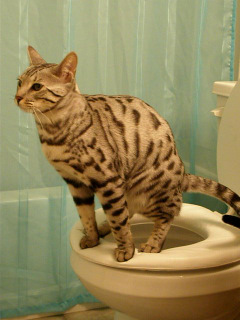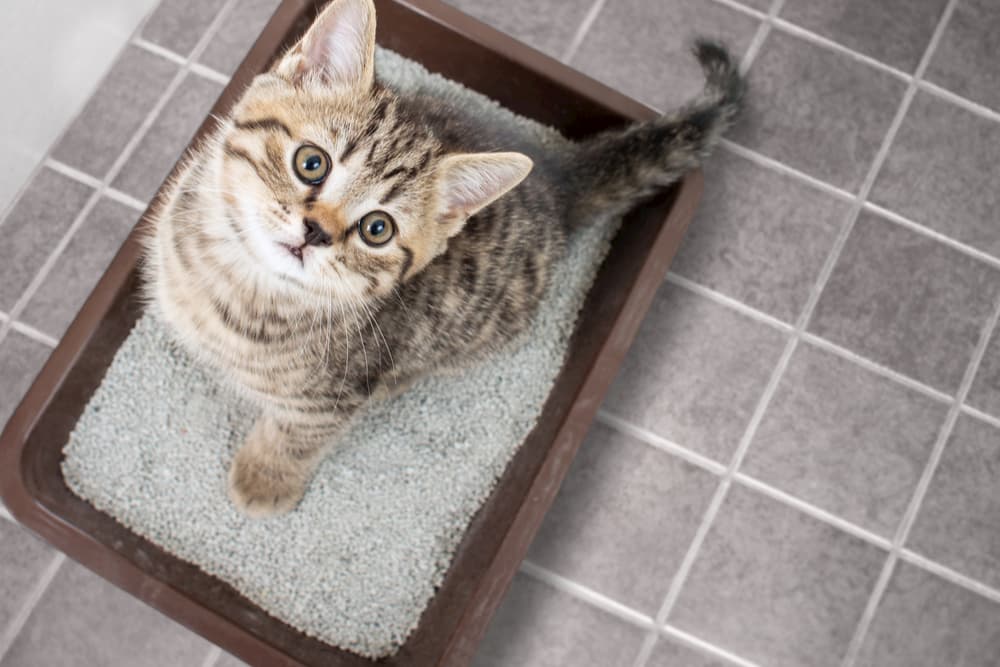Why Flushing Cat Poop Down Your Toilet Isn't a Good Idea - Tips for Safer Disposal
Why Flushing Cat Poop Down Your Toilet Isn't a Good Idea - Tips for Safer Disposal
Blog Article
We have stumbled upon the article pertaining to Can You Flush Cat Poo or Litter Down the Toilet? directly below on the net and felt it made sense to discuss it with you on this page.

Intro
As pet cat owners, it's necessary to be mindful of how we get rid of our feline pals' waste. While it may appear hassle-free to flush feline poop down the commode, this method can have detrimental effects for both the atmosphere and human wellness.
Alternatives to Flushing
Fortunately, there are safer and more responsible means to throw away cat poop. Think about the adhering to alternatives:
1. Scoop and Dispose in Trash
The most usual approach of disposing of cat poop is to scoop it into a naturally degradable bag and throw it in the trash. Make certain to use a committed clutter scoop and throw away the waste promptly.
2. Use Biodegradable Litter
Choose naturally degradable pet cat trash made from products such as corn or wheat. These trashes are eco-friendly and can be securely taken care of in the garbage.
3. Bury in the Yard
If you have a backyard, think about hiding cat waste in a marked area away from veggie gardens and water sources. Make certain to dig deep adequate to prevent contamination of groundwater.
4. Mount a Pet Waste Disposal System
Buy a pet waste disposal system especially created for feline waste. These systems utilize enzymes to break down the waste, lowering odor and environmental effect.
Health Risks
Along with environmental issues, flushing pet cat waste can also position wellness risks to people. Feline feces may contain Toxoplasma gondii, a bloodsucker that can trigger toxoplasmosis-- a potentially extreme disease, particularly for expectant women and people with weakened body immune systems.
Ecological Impact
Flushing pet cat poop presents dangerous virus and parasites right into the supply of water, positioning a considerable threat to water ecological communities. These contaminants can negatively impact aquatic life and concession water top quality.
Conclusion
Responsible animal possession expands past supplying food and sanctuary-- it additionally involves appropriate waste monitoring. By avoiding purging pet cat poop down the bathroom and going with different disposal approaches, we can lessen our environmental footprint and shield human wellness.
CAN I FLUSH MY CAT'S POOP DOWN THE TOILET?
Always avoid flushing cat poop down the drain because not only could it potentially contain harmful parasites called toxoplasmosis, the litter could sit in your line and lead to a clog.
Plenty of waste gets flushed down your toilet every day, so what harm could a little cat poop and cat litter do? The answer is a lot, which is why you never want to send it down your drains.
Can I Flush My Cat's Poop Down The Toilet?One of the biggest problems with flushing your cat’s presents is the harmful parasites in your feline’s stool called toxoplasmosis. Extremely dangerous for humans, especially pregnant women and people who are immunocompromised, these parasites can cause a multitude of problems for unborn babies and even cause death or miscarriage if the infection happens early. That’s why you should always avoid touching cat poop. Also, water systems are not equipped to handle toxoplasmosis and are unable to destroy the parasite before it’s sent back into the environment, potentially jeopardizing the health of local area wildlife, specifically marine life.
Flushing cat poop could also lead to a future drain clog. Try as you may to eliminate any litter from it, there will always still be some stuck on there – and even if it says flushable on the label, it’s not! Cat litter is made up of bentonite clay, which has the tendency to harden when wet, creating a thick, almost cement-like quality. Cat litter that ends up down the drain can expand from the moisture in the pipes and then harden, blocking any wastewater. If you have a septic tank or a cesspool, it cannot handle cat litter either, no matter what kind. If it solidifies in the tank, in any of the system’s major parts like the inlet baffle, it’ll create some expensive problems.
The best way to dispose of cat poop safely is to scoop it into a bag and throw it into the trash – and ways of dealing with the smell include adding baking soda and replacing the box more.
Now that we’ve explained the potential harm that flushing cat poop can cause to you and your drains, you might be wondering the best way of dealing with it. Unfortunately, it’s the old-fashioned way of scooping it into a bag and then placing it into a trash can. They also make pet-proof trash cans that lock in the smell, so that you don’t have to always immediately take it out. If you’re tired of smelling the litter box after even just one use from your feline, there’s things you can do to help combat that smell. Adding baking soda to the litter will reduce smells, but just don’t add too much or your cat will no longer want to use the box. You could also replace the box more frequently, at least once a year, as those smells can just seep inside the scratch marks. Lastly, try changing to a new litter formula – some are better with smells than others.

As a reader about How to Dispose of Cat Poop and Litter Without Plastic Bags, I was thinking sharing that article was beneficial. Are you aware of someone else who is excited about the subject? Please feel free to promote it. Thank you for your time invested reading it.
Call Today Report this page